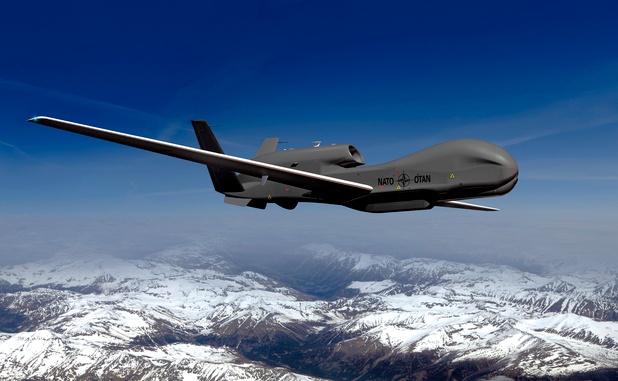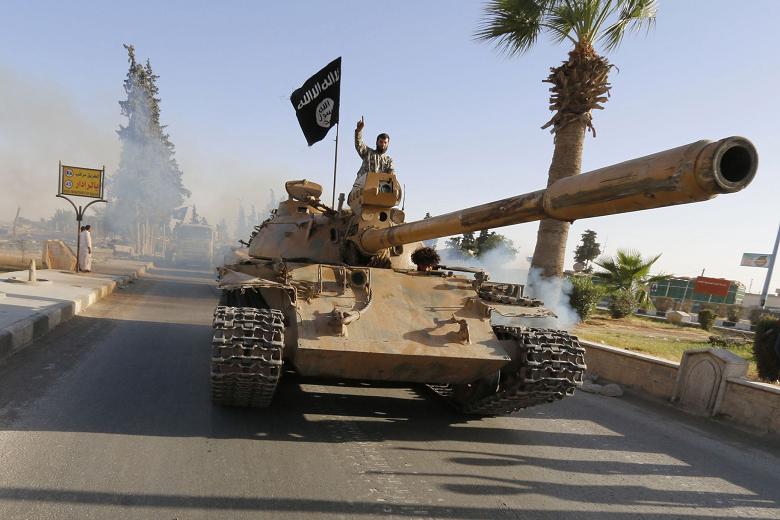Even as Canada’s North takes on greater strategic importance, the Canadian capacity to respond to security threats in that region remains limited. For the most part, it is limited to occasional patrols by the reliable but venerable CP-140 Aurora or the intermittent stationing of a pair of CF-18 fighters in Inuvik. There are some options available to increase the Canadian military presence in the Arctic, such as procuring new aircraft to replace the Aurora and the establishment of an airbase at Resolute Bay, Nunavut. But perhaps the most innovative solution for exerting Canadian sovereignty in the North comes from an unsolicited proposal by Northrop Grumman.

As far back as 2000, the Department of National Defence recognized the importance of drones to the future of warfare and instituted the Joint Uninhabited Surveillance and Target Acquisition System (JUSTAS) project. The history of this procurement program is long and complicated, having yet to see completion. This is in part due to the launch of the combat mission in Afghanistan not long after the inception of JUSTAS, prompting Canadian officials to lease a CU-170 Heron directly from the manufacturer, Israel Aerospace Industries.
Along with the delays to JUSTAS, the project’s budget has also been expanded from what was originally $500 million to approximately $1.5 billion. Although the focus remains on obtaining an unmanned aerial vehicle (UAV) capable of providing high- or medium-altitude surveillance of the battlefield, the conclusion of the combat mission in Afghanistan and the different nature of the mission in Iraq and Syria leaves some uncertainty as to whether UAVs could be put to good use by the Canadian Forces in the immediate term.
Inspired by the success the United States Air Force enjoyed testing the RQ-4 Global Hawk over Canadian airspace, Northrop proposed a modified version of this high-altitude long-endurance UAV for Arctic patrols by the Royal Canadian Air Force. Dubbed the Polar Hawk, each unit would cost approximately $225 million. But each aircraft’s suite of sophisticated sensors would allow it to survey as much as 100,000 square kilometres each day and it could remain airborne for 28 hours.

Northrop officially withdrew the Polar Hawk from consideration in late 2011 out of frustration with the repeated delays to JUSTAS and the vague design specifications from DND. But the company is still closely following Canadian efforts to obtain UAVs and could always re-submit the Polar Hawk design. It would be wise for Canadian policymakers to welcome Northrop’s initiative in this area for two reasons in particular: first, the Polar Hawk would greatly enhance the surveillance of the North against incursion by hostile forces and criminal elements, such as the smuggling of narcotics and other contraband through waterways cleared of ice for growing stretches of the year. But, just as importantly, the Polar Hawk would interface well with NATO’s surveillance capabilities, making intelligence sharing in any future Arctic conflict relatively quick and simple.
Specifically, NATO has initiated the Alliance Ground Surveillance (AGS) system to help monitor the external borders of NATO against the threat of military attack. The AGS selected Northrop Grumman’s Global Hawk design and now has a fleet of these aircraft based in Sigonella, Italy, although it is known that several of these UAVs have patrolled Estonian airspace in the wake of Russian aggression in Ukraine. Finding ways to network a Canadian fleet of Polar Hawks with the AGS would diminish the need for Aurora patrols of the Canadian Arctic but also, for example, allow for a scaling back of the role played by manned aircraft in NATO’s Icelandic Air Policing Mission, which secures Iceland’s otherwise undefended airspace against Russian incursion.
At a time when the Canadian government is met with budgetary challenges, it is important not to drag the heels for too long on JUSTAS. Otherwise, Canada may experience a major technological gap with its allies. Playing catch-up would ensure a final price tag much higher than the projected $1.5 billion for JUSTAS or the $225 million per Polar Hawk.




